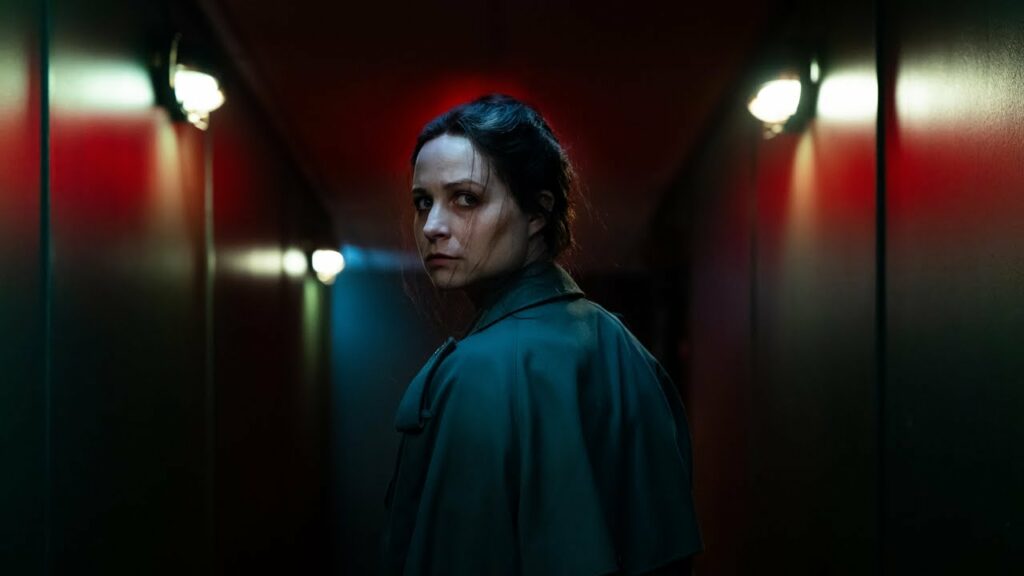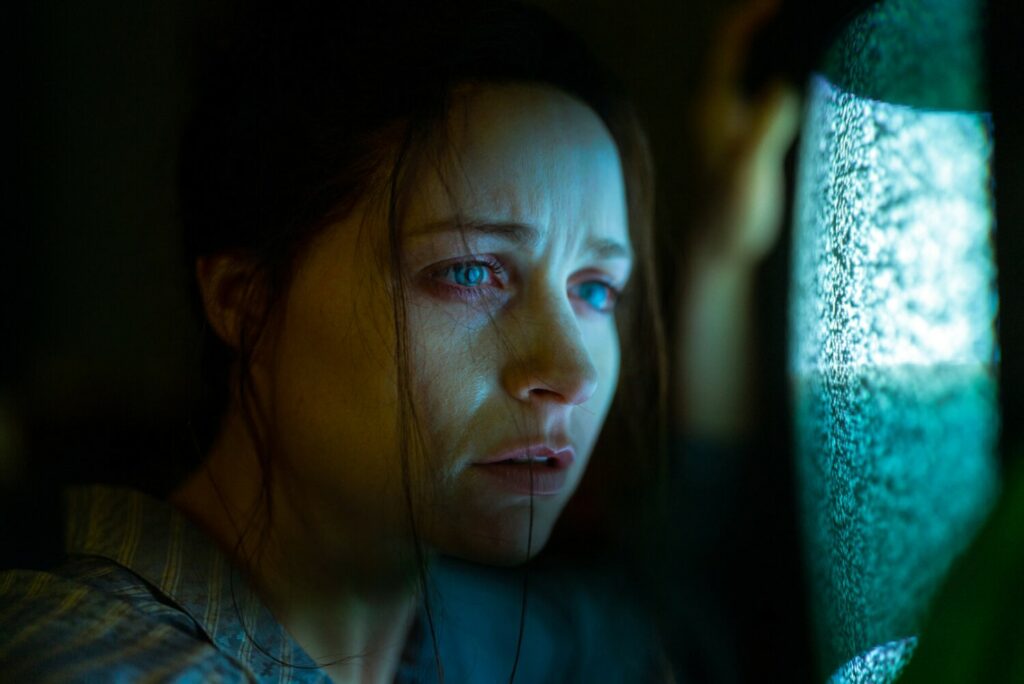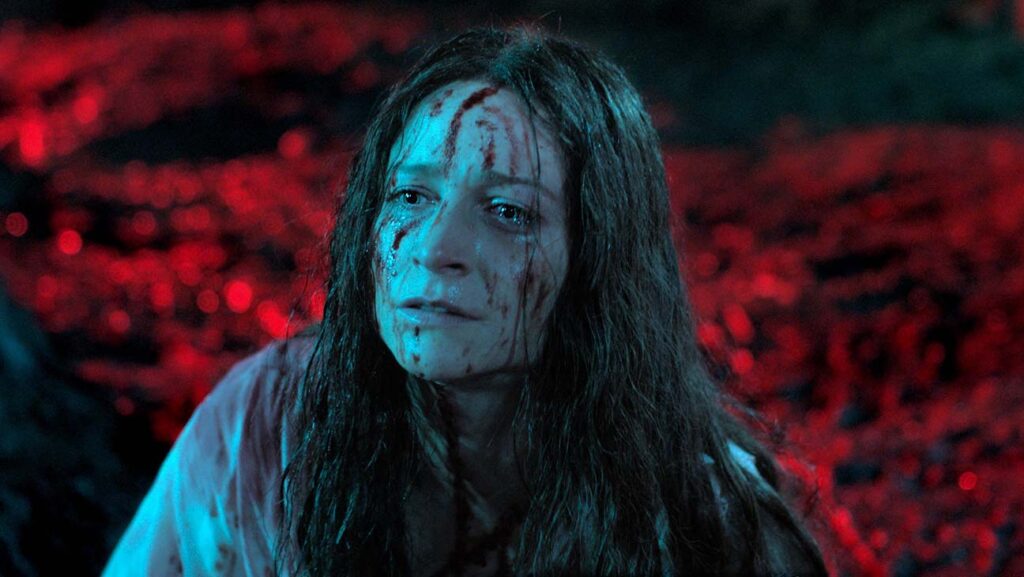Like all cultural artefacts, film goes through style epochs. Since 2014, when David Robert Mitchell provided the world with its first “elevated horror” (although we wouldn’t start widely using that term until 2017), there has been a rough formula of how to create a “good” horror film. Sure, not all elevated horror is bound to these tropes but, generally speaking, we need only step back and take a look at what’s hit our screens in the past decade to notice it’s all disarmingly familiar.
The first step is usually to utilise anachronistic aesthetics – It Follows catalysed an increasingly grating stream of 80’s-worship, whilst films like The Conjuring and Hereditary take their cues from Exorcist-era 70’s flicks. Films like The Witch straddle the line between a fashion for even older periods (The Lighthouse only confirms this), but also a fetishization for a late-20th Century horror cannon that was enthralled by witchcraft and folktale.

Censor is, almost self-parodically, set amidst the 80’s video nasties hysteria and subsequent Video Recordings Act era. I’m sure that has absolutely nothing to do with its sudden surge of approval in the British critical establishment, whose denizens remain trapped in an era where children weren’t exposed to beheadings on social media, and the most daring thing you could do was expose yourself to Faces of Death in your friend’s weird brother’s puberty-cave. One wonders when we’ll eventually get tired of this faux-retro 80’s craze, which is by now so run into the ground that a bit of giallo lighting makes me want to throw up.
The second most common aspect of elevated horror is to layer in some sort of vague, one-note metaphor or theme – Get Out had racism, The Babadook had depression, Saint Maud had religion, and now Censor has censorship. Look beneath the surface, though, and these films almost never have anything to say (“what if x societal issue was the real horror all along?!!” (imagine!)) but say it loud enough that even the densest of critics can add a cheeky extra star to that all important rating for the self-congratulation of identifying “what it’s about”.

The third, and possibly most annoying trend, is a tendency to make everything ambiguous for no reason whatsoever. Incredible films have traded on ambiguity for the last century in order to haunt viewers for years to come; elevated horror films often boil down to a simple “did they or didn’t they?” question that’s never resolved – not like we cared in the first place. Ambiguity is not, and never was, a substitute for an engaging premise, and it is often painfully obvious when it is being used to plaster over cracks in a rote screenplay. It feels to me like Censor was always a constellation of borrowed aesthetics and neon lights, and never really a thought-out concept. And don’t get me wrong, style can absolutely be substance, but we’re now so late into this wave of ambiguous throwback indies that the style is routine.
The point, if it’s not already obvious, is that very few of these elevated horror films are actually “elevated” – they’re often not even any good. But the preconditions of the genre – artistic cinematography, progressive social message, pseudo-intellectual ambiguity – have also apparently become preconditions for instantaneous, mass critical approval. Indeed, this mirrors the apparent rise of a self-identifying highbrow fandom – groups of trendy young people and critics who act towards distributors such as A24 in the same manner that adult children still obsess over Harry Potter.

Censor is, like many of its contemporaries (though, very importantly, not all), a film without ideas or direction; one that floats along on a perfectly acceptable aesthetic fog whilst steadfastly refusing to do anything interesting. Its chief plot gambit (yep, it’s a “did they or didn’t they?”) is set up early, evaporates into thin air, and is not compelling in the slightest. Its aesthetics, though beautiful, are borrowed from other films – both old and new. Its thematic exploration boils down to “but what if the censor was the morally corrupt one?” – a question that A) is never answered, and B) feels more suited to an 80’s BBC article than a serious piece of work in 2021. For the avoidance of doubt, it is neither scary nor creepy, aside from a rather well-edited end sequence that is sadly undermined by its use of Blanck Mass’s ‘Chernobyl’ – a direct (and presumably not ignorant) lift from A Field in England.
New and old independent voices in this industry often use their platform to make something interesting and unique; something that is uniquely them and nobody else’s – and the critical/commercial establishment is likely to abandon it at first glance. Time and time again I’m blown away by boundary-pushing work that never makes it out of the brutal festival circuit and into the mainstream – whether commercial or arthouse. Rest peacefully, future filmmakers, in the knowledge that all you have to do to gain critical adoration is follow the blueprint. Just make sure you cover it up with some fog and neon lights first.
Censor releases in UK cinemas August 20th.
